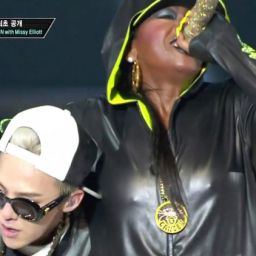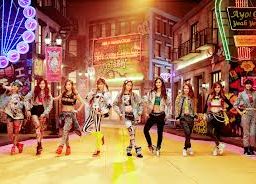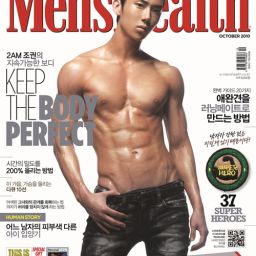by Raizel Liebler
Five years is a long time in music, especially in pop music. But five years ago, K-pop made its first major forays into the highly sought after North American music scene when SM Entertainment held a label concert in Madison Square Garden on October 23, 2011.
Oddly enough, this wasn’t even the first large SM concert in the U.S., slightly more than a year before a similar concert was held in Los Angeles at the Staples Center, but the New York show was the one with the historical significance built in, complete with a concert video and a highly coveted mention in the New York Times. This concert featured major SM groups and individual performers: BoA; f(x); Girls’ Generation; Shinee; Super Junior; Super Junior-M; and TVXQ.
This was supposed to be the moment for k-pop to truly hit it big in the U.S. — but it wasn’t. SM really did send their best to the U.S., trying to make the best possible impression. But their efforts failed. Why?
Solo Artists
Before moving on to the groups, BoA seemed destined for greatness in the U.S. After all, her name stands for Best of Asia, which she had already proven from an early age, becoming a star in both Japan and Korea, in both languages. In 2009, she released a self-titled English language album that seemed right for the American market. After all, she had songs written by the co-writer of Beyonce’s Get Me Bodied, Ring the Alarm, and Video Phone and Destiny’s Child’s Soldier. The lead single, Eat You Up is one of the first songs by a Korean artist to be produced and written by Western producers.
However, like previous attempts by other Asian female artists, BoA’s efforts failed. And Utada, the Japanese American singer who released two English language albums for the U.S. market had all of the reasons for potential success: she is one of the most successful Japanese pop artists of all time, she is American, she co-wrote an album with Timbaland, and even Elton John thought that she had the potential to be “be the first Japanese recording artist to really make it in the West.” Utada even had previous American success from a single she co-wrote with Pharrell Williams and performed with Foxy Brown for the Rush Hour 2 soundtrack.
But despite both Utada having the right pop sound — and in BoA’s case, being an excellent dancer, neither of them sparked the interest to get them mainstream success. This, despite comparisons to Aaliyah, Britney Spears, and other breathy dancy female artists. Both went on the right urban and dance music stations for interviews. But success in the U.S. never arrived. Thankfully, both of them remain great successes in Japan (and in Korea for BoA) where both their breathy dancy music and ballads find appreciative audiences.
But the lack of success in the U.S. for similar artists that find success almost everywhere else has a long-standing precedent in Kylie Minogue, who is viewed as a one-hit wonder or a two hit-wonder (if someone has a long memory) in mainstream U.S. music. Yet her success within LGBTQ U.S. community has never wavered, following her every release — similar to what the rest of the English speaking market does — in both Australia and the U.K. and much of Europe, where she is a major star. BoA could definitely find success in the U.S. within the dedicated dance market surrounding the LGBTQ community, but would this focus be worth it or making it enough? It is doubtful that her label/management would want to deal with the conservative pushback should she move in such a direction.
Girl Groups
So why not Girls’ Generation? Why didn’t they have the promised success in the U.S? Of all of the groups on the stage at Madison Square Garden that night they were the most primed for success. After all, they had two Korean-American members raised in the U.S., ready to participate in interviews in ways that wouldn’t make them seem “foreign”, are amazingly precise dancers, and have songs that fit comfortably within mainstream American pop music. And like Utada, they worked with well-known R&B and hip-hop artists to help their music have the “right” sound, with Snoop Dogg and Teddy Riley.
But their look didn’t fit with what American audiences were seeking at the time. As part of the push for their American debut, they were interviewed and performed on David Letterman’s the Late Show. This interaction demonstrates the awkwardness of moving k-pop towards mainstream U.S. acceptance, where both Letterman and the members of Girls’ Generation, while polite with each other, never manage to move past awkwardness in their interaction, due to the different styles of host-group interactions between the two countries. Mainstream American audiences were just too beyond the idea of girl groups by that point — Destiny’s Child were long gone and Fifth Harmony wasn’t a thing yet.
But the disconnect between the group and the American audience wasn’t just due to Letterman. Korean pop groups, including Girls Generation, have many opportunities to perform every official single for audiences ranging from small rooms to full stadiums. Most singles are performed on several music shows over the course of the first weeks of release — and also other times until the next album, including on the three major ones: KBS’s Music Bank, MBC’s Show! Music Core, and SBS’ Inkigayo. This means that groups are always polished and have levels of preciseness in their performances that don’t appear on American television shows that have pop performers. Instead, pop performers that appear on the limited options available, like Saturday Night Live and late night television, instead generally incorporate “rock star attitude,” leaving audiences expecting mostly ‘tude and show rather than talent.
Additionally, the idea of Asian girls moving and singing together perfectly as a monolith was a step too unusual for mainstream American audiences used to Asian pop culture framed in the “weird Japan” mindset. And “weird Japan” has become an American (and generally English language) shorthand for pop culture from anywhere west of the Indian subcontinent and east of Hawaii, encompassing the cultural productions of not only Japan, but also China and Korea, while ignoring Thai, Vietnamese, Pinoy, and Indonesian pop cultures, among others.
Within this context, there isn’t a difference between the framing for Babymetal and Girls Generation in mainstream American music media despite the gulf of difference; they are equally weird and different — not sexy enough for the American (white!) straight male gaze. After all, these were the lede in the New York Times lumping together kawaii and aegyo focusing on Girls Generation by a Pulitzer Prize winning investigative journalist:
“Chirpy bubble-gum harmonies bop across the desolate Demilitarized Zone. ”Look at me, I’m your genie, your dream, your genie,” the K-pop band Girls’ Generation beckons as grim-faced soldiers patrol the border. In what might be called the Hello Kitty offensive, the relentlessly upbeat girl group, a sugary confection better known for its hot-pants choreography than political statements, has become the latest weapon in the Korean cold war.”
This lazy media framing allows for broader positioning of video games (Nintendo!), anime (read: shonen, not shojo), and American Ninja Warrior as acceptable representation of Asian pop culture, but also leads to stereotypical “wacky” trendpieces on maid cafes and anything else that could be seen as of lurid interest to men that would want to see high school uniforms. And the range for cool Asian culture also excludes anything by or directed for the pop culture interest of teen girls — such as kpop.
The interest of female music fans is not relevant to even the reportage of this concert, where the New York Times instead reported like someone who has never talked to a teen girl!:
“Girls’ Generation gave perhaps the best representation of K-pop’s coy, shiny values in keeping with a chaste night that satisfied demand, but not desire. …
Male and female performers shared the stage here only a couple of times, rarely getting even in the ballpark of innuendo….
The best rapping of the night came from Amber, the tomboy of the least polished group on the bill, f(x), who received frenzied screams each time she stepped out in front of her girly bandmates.”
Later reporting about kpop also continued this combined trend of male gaze and wacky Asia, especially surrounding Cube’s Hyuna’s SXSW performance, which I’ve written about here.
Moving back to what has changed in the last five years, for a long time, SM was hesitant to have Girls’ Generation have sub-groups. However, now with TTS, a more R&B style subgroup and Taeyeon’s solo debut focused mostly on ballads, there is a greater possibility of having some potential U.S. success, especially if Taeyeon is marketed as a singer-songwriter with guitar. However, so much of even that market is saturated, without movement for outsiders without the right connections.
f(x)’s lack of success in the U.S. market is unfortunate, but not surprising. Of the girl groups on SM’s roster, f(x) is the most experimental — and the one with the most potential to be like Shinee, SM’s boy band experimental group. However, they were never fully pushed in the U.S. — a shame considering Amber is Taiwanese-American and hilarious. They did appear in a Funny or Die video with Anna Kendrick, but nothing was done to capitalize on this video, such as licensing this song or others to appear in advertisements, as was done by YG with 2NE1’s I Am the Best appearing in Microsoft ads.
[youtube_sc url=”7VVERnrVTW8″]
However, the remainder of f(x), specifically the solo/duo efforts of Luna and Amber do have a chance of making in the English speaking market, but within two niche audiences — EDM and the mostly LGBTQ dance music market. Luna’s Save Somebody is even written by JoJo, and she seems to fit well within the “diva with a DJ” sound that American audiences understand. Even if Luna & Amber don’t make it big in U.S. right away, if they work it well within the Euro pop audience that will understand the sound first, then they have, in my opinion oddly enough, the highest chance of any other SM artist(s) to make it to performing at an American music award show.
Not yet launched five years ago, Red Velvet seems to be receiving the types of unusual songs that f(x) used to get, but if the measured perfection of Girls Generation never hit it off in the U.S., then the aggressive, quirky cuteness of Red Velvet isn’t likely to make the mainstream either.
Boy Bands
So now we get to Shinee; Super Junior; Super Junior-M; and TVXQ. We will have a separate essay specifically focused on Shinee, but overall the reasons for the lack of success for these is similar — for a mainstream American pop fan, what would be the reason to choose any of these groups over each other — or groups from other labels?
The barriers to entry to boy band fandom are simultaneously low and high: anyone can listen on YouTube — but with the collectiveness aspect of boy band fandom, what will make someone choose k-pop — and choose any particular group? Already existing fans of any or all of the groups can talk an ear off about them, but from someone who is listening to them for the first time, all of them would appear to be like One Direction or Five Minutes of Summer, but with a language difference.
Super Junior and Super Junior-M will continue to do their thing as members rotate out and then back in, due to required military service, but their primary audience are aging with them. Likely if SM wanted to hit the squee teen market in the U.S. again, they would more likely focus on younger groups with about as many members like EXO, with its ten to twelve members matching Super Junior’s thirteen members at its peak.
Conclusion
But this isn’t to say that there isn’t the possibility of success in the U.S. and English speaking market for k-pop. However, what success is will need to be drawn to include the type of fans that will ensure k-pop artists receive fandom-based awards (In 2015, Super Junior won the “International Artist” and “Best Fandom” in the Teen Choice Awards) rather than mainstream radio airplay and what I will call “your grandma knows who they are.”
Unlike in other markets, including the Korean marketplace and the overall hallyu / global wave of Korean pop culture, the ideal of the 1,000 true fans truly loving and supporting a group, by buying all of the merch and going to all the shows, is what will sustain the kpop market in the U.S. K-pop fans, wherever they are, are so dedicated, so I hope that SM will focus its efforts on already existing fans — and making new sustainable long-term fans, because the American music audience is so fickle. Even if the SM artists that appeared five years ago had found mainstream American success within those following six months, that would have been no guarantee that they would still be popular or even recognized today.










It’s so hard to tell if kpop is popular if you live, as I do, in a rural part of the country. Or, y’know, outside California.
As a Shawol, I can’t wait to read your article about SHINee!